Episode #308- Coffee, Tea, or Flowers?
Episode #308- Coffee, Tea, or Flowers?
Today on Life In Bloom pour yourself a cup to enjoy, as we explore connections between coffee, tea and flowers – including recycled grounds, blooming teas, themed arrangements, and – we’ll learn about Mary Chalmers Brown, creator of this popular, vintage dinnerware pattern, as seen on many Life In Bloom episodes.
“Live on coffee and flowers. Try not to worry what the weather will be.” – Matt Berninger
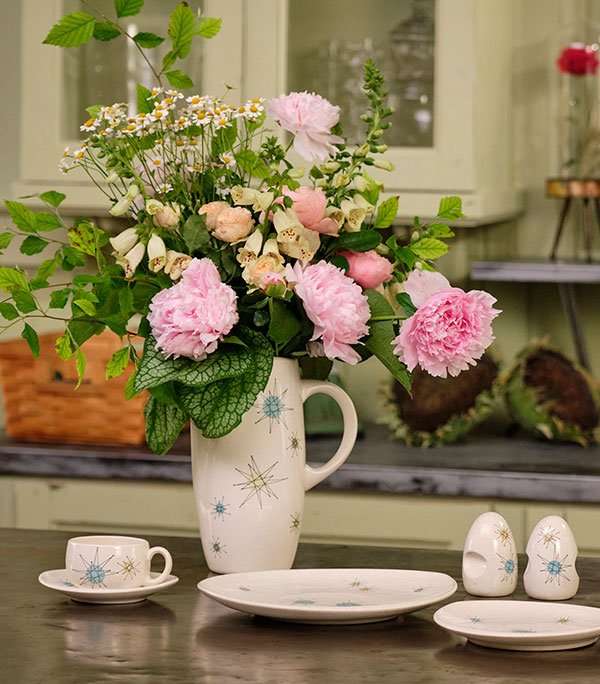 What’s nicer than enjoying a cup of coffee or tea with a friend? It’s one of life’s simple pleasures, not unlike the joy flowers bring. While Coffee is top of mind with many people, Tea is actually the world’s most popular beverage. It occurs to me that a cup of either one, has at least one thing in common with flowers - most people are happy to be greeted by any of them. So I thought it would be fun to look at other ways that Coffee, Tea, and Flowers intersect on this episode of Life in Bloom.”
What’s nicer than enjoying a cup of coffee or tea with a friend? It’s one of life’s simple pleasures, not unlike the joy flowers bring. While Coffee is top of mind with many people, Tea is actually the world’s most popular beverage. It occurs to me that a cup of either one, has at least one thing in common with flowers - most people are happy to be greeted by any of them. So I thought it would be fun to look at other ways that Coffee, Tea, and Flowers intersect on this episode of Life in Bloom.”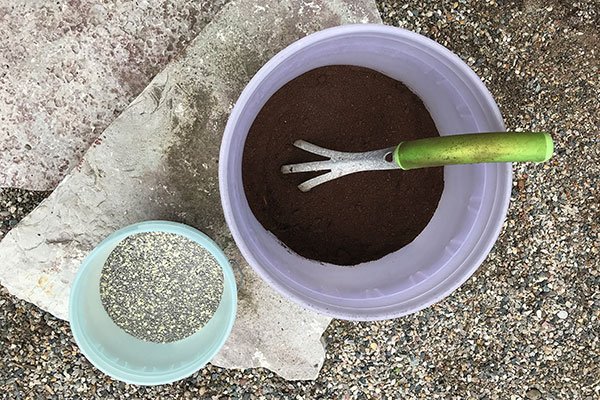 Coffee Grounds in the Garden If you drink coffee on a daily basis, you might have leftover coffee grounds, depending on how it’s prepared. Rather than throwing them out, why not re-use the grounds in the garden? Hydrangea are a great place to repurpose your Coffee Grounds- Hydrangea blooms react to the presence of Aluminum in the soil- so adding coffee grounds (or Aluminum Sulfate) will provide you with Blue Blooms- while Alkaline soil will provide Pink blooms- I've always noticed that where the Blue Or Pink Blooms occur naturally- people want the opposite- hehehe... I would have PINK Hydrangeas all day long due to the Alkaline Soil I have in Michigan- so I'm always adding Coffee Grounds and Aluminum Sulfate to try to get the Blue Blooms... It's a funny situation!
Coffee Grounds in the Garden If you drink coffee on a daily basis, you might have leftover coffee grounds, depending on how it’s prepared. Rather than throwing them out, why not re-use the grounds in the garden? Hydrangea are a great place to repurpose your Coffee Grounds- Hydrangea blooms react to the presence of Aluminum in the soil- so adding coffee grounds (or Aluminum Sulfate) will provide you with Blue Blooms- while Alkaline soil will provide Pink blooms- I've always noticed that where the Blue Or Pink Blooms occur naturally- people want the opposite- hehehe... I would have PINK Hydrangeas all day long due to the Alkaline Soil I have in Michigan- so I'm always adding Coffee Grounds and Aluminum Sulfate to try to get the Blue Blooms... It's a funny situation!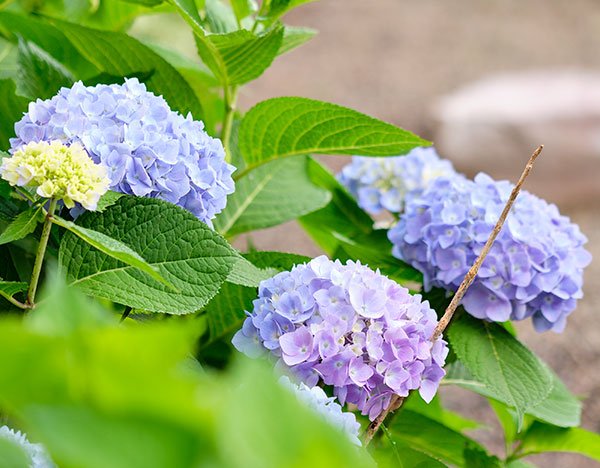 Here's a great article about how the process works - and why we have pink and blue hydrangeas!Carafe or Tea Pot Arrangements “A new or vintage carafe - or even a teapot - can be fun vessels for arranging flowers - let me show you how easy they can be to use… I have several that Kel collected from his Grandfather's Farm- and they are super meaningful- and full of memories- so what better way to observe those memories- than to fill them with flowers.
Here's a great article about how the process works - and why we have pink and blue hydrangeas!Carafe or Tea Pot Arrangements “A new or vintage carafe - or even a teapot - can be fun vessels for arranging flowers - let me show you how easy they can be to use… I have several that Kel collected from his Grandfather's Farm- and they are super meaningful- and full of memories- so what better way to observe those memories- than to fill them with flowers.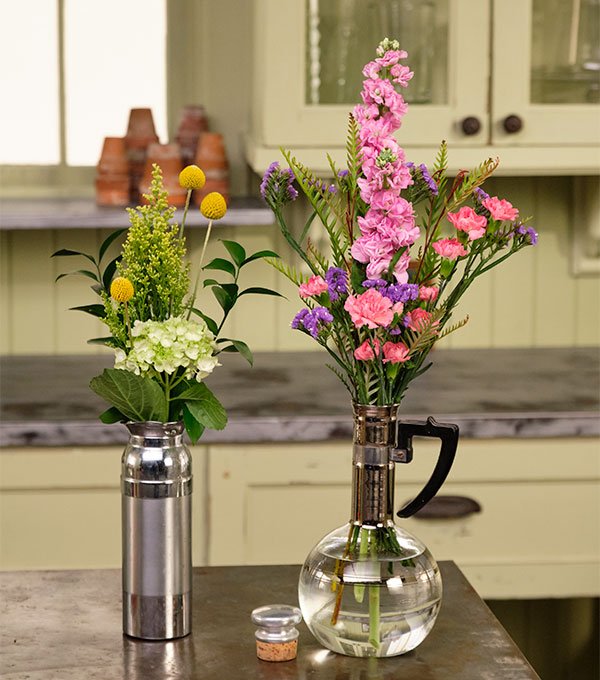 I always encourage everyone- to get their memories- off the shelves- dust them off- and fill them with flowers- and enjoy having them around- these vintage carafés, coffee pots, and caddies- are a perfect example!
I always encourage everyone- to get their memories- off the shelves- dust them off- and fill them with flowers- and enjoy having them around- these vintage carafés, coffee pots, and caddies- are a perfect example!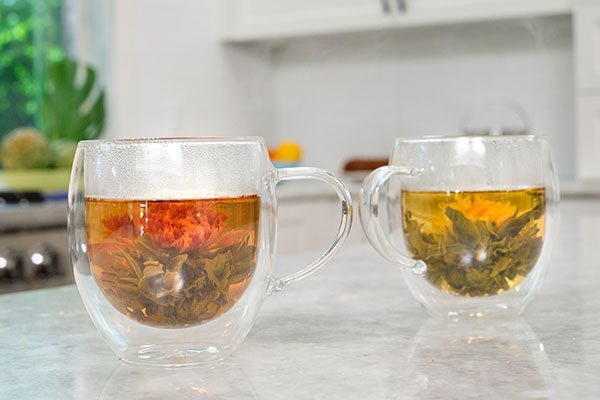 Recipe In Bloom: Blooming Tea While not necessarily a recipe- this is a fun TEA Item you can pick up at a local beverage store or on line- it's fun to drop the Blooming into a Tea Cup and watch the transformation- from Tea "ball" to Steeping Bloom! Enjoy!
Recipe In Bloom: Blooming Tea While not necessarily a recipe- this is a fun TEA Item you can pick up at a local beverage store or on line- it's fun to drop the Blooming into a Tea Cup and watch the transformation- from Tea "ball" to Steeping Bloom! Enjoy! 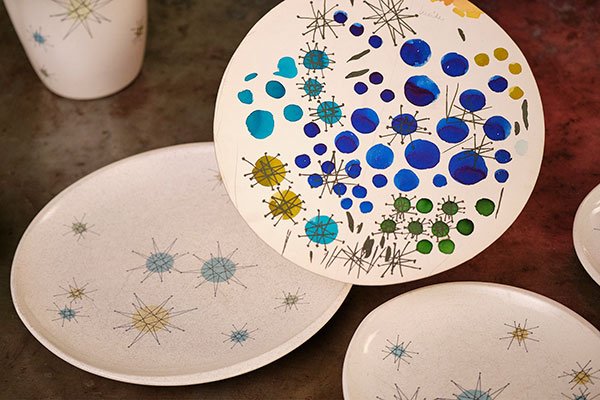 Starburst Franciscan DinnerwareJ talks about the origin and creator (Mary Chalmers Brown) of the famous Franciscan Starburst dinnerware pattern often see on the show. J introduces you to Mary's Niece- Charlotte McLravy- and shares the amazing artifacts, personal items and other patterns created by Mary Chalmers Brown! J also arranges flowers in various pieces from different patterns- and shares the history of the Mary Chalmers BrownI often plate the recipes here on Life In Bloom on a particular dinnerware pattern. The Franciscan Starburst pattern is a favorite of many, and I use mine every day. So I was very excited to receive an e-mail from Charlotte McLravy about the pattern...here's the transcript of the email I received about the Starburst Dinnerware pattern that had been in a segment of "J Schwanke's Life in Bloom".
Starburst Franciscan DinnerwareJ talks about the origin and creator (Mary Chalmers Brown) of the famous Franciscan Starburst dinnerware pattern often see on the show. J introduces you to Mary's Niece- Charlotte McLravy- and shares the amazing artifacts, personal items and other patterns created by Mary Chalmers Brown! J also arranges flowers in various pieces from different patterns- and shares the history of the Mary Chalmers BrownI often plate the recipes here on Life In Bloom on a particular dinnerware pattern. The Franciscan Starburst pattern is a favorite of many, and I use mine every day. So I was very excited to receive an e-mail from Charlotte McLravy about the pattern...here's the transcript of the email I received about the Starburst Dinnerware pattern that had been in a segment of "J Schwanke's Life in Bloom".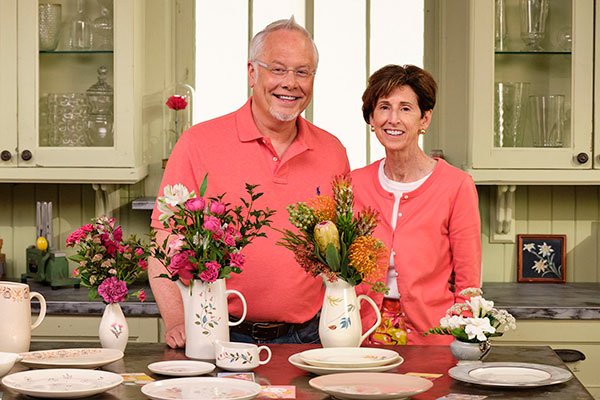 Dear Mr. Schwanke:
We recently watched an episode of your "Life in Bloom" on the PBS show Create. It was entitled "Tulips Year Round Spring" (5/8/19) and noticed you served a dish with goat cheese and herbs on tulip petals. One of the things that caught our eye was the actual dish you placed it on. It is the Franciscan pattern "Starburst" which was designed by our late aunt, Mary Chalmers Brown, who worked for the company in the 1950's.
I am curious to know if this a pattern you collect and/or if you know of her many other designs?
Regardless, it was fun to see a piece of her work still being used and enjoyed.
My best to you in 2020.
Sincerely,
Charlotte McLravy
Grand Rapids, MIIt was a such a treat to hear from Charlotte- and also to find that she resided in my home town- Grand Rapids Michigan. I arranged a visit with Charlotte- and Kelly and I got the opportunity to learn more about Charlotte's Aunt- Mary Chalmers Brown- and got to see different patterns she created and some amazing artifacts that Charlotte has - including the original concept art for the Starburst Dinnerware- Unpublished Wall Paper Patterns, and even Mary's personal sketch book.
Dear Mr. Schwanke:
We recently watched an episode of your "Life in Bloom" on the PBS show Create. It was entitled "Tulips Year Round Spring" (5/8/19) and noticed you served a dish with goat cheese and herbs on tulip petals. One of the things that caught our eye was the actual dish you placed it on. It is the Franciscan pattern "Starburst" which was designed by our late aunt, Mary Chalmers Brown, who worked for the company in the 1950's.
I am curious to know if this a pattern you collect and/or if you know of her many other designs?
Regardless, it was fun to see a piece of her work still being used and enjoyed.
My best to you in 2020.
Sincerely,
Charlotte McLravy
Grand Rapids, MIIt was a such a treat to hear from Charlotte- and also to find that she resided in my home town- Grand Rapids Michigan. I arranged a visit with Charlotte- and Kelly and I got the opportunity to learn more about Charlotte's Aunt- Mary Chalmers Brown- and got to see different patterns she created and some amazing artifacts that Charlotte has - including the original concept art for the Starburst Dinnerware- Unpublished Wall Paper Patterns, and even Mary's personal sketch book.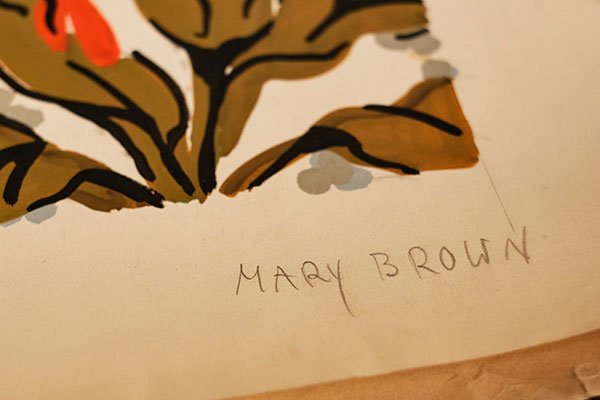 We'll share more of the artifacts, and things Charlotte shared in an upcoming episode of BEHIND THE BLOOM (Coming Soon)
We'll share more of the artifacts, and things Charlotte shared in an upcoming episode of BEHIND THE BLOOM (Coming Soon) Learn more about Mary Chalmers Brown- in this blog (Coming Soon)Vase-In-Vase w/Coffee Beans & Coffee Color Flowers This arrangement- features a fun concept of how you can place two cylinder vases together- inside one another to create a showcase for coffee beans, other items, shells, beans, or even children's artwork- to help theme an arrangement- This project features one of J's Bouquets- the "Cream In Your Coffee" Bouquet.
Learn more about Mary Chalmers Brown- in this blog (Coming Soon)Vase-In-Vase w/Coffee Beans & Coffee Color Flowers This arrangement- features a fun concept of how you can place two cylinder vases together- inside one another to create a showcase for coffee beans, other items, shells, beans, or even children's artwork- to help theme an arrangement- This project features one of J's Bouquets- the "Cream In Your Coffee" Bouquet.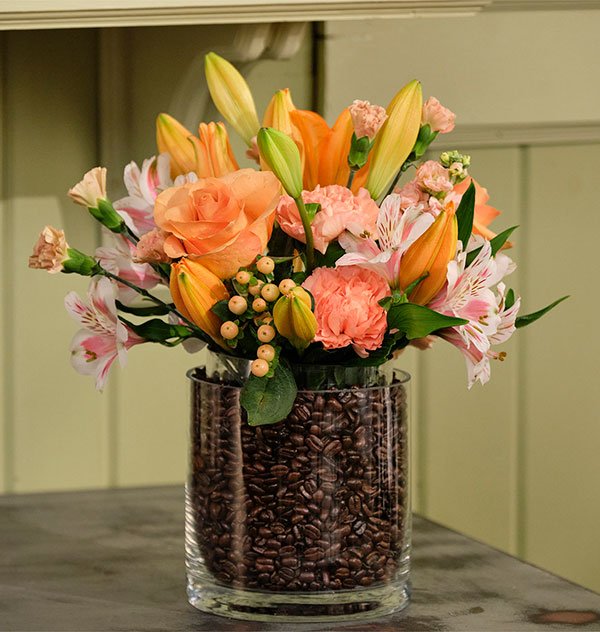 Here's another project- where I used the Vase in the Vase concept with Artificial Flowers! Learn more about "Cream in your Coffee- One of J's Bouquets here!
Here's another project- where I used the Vase in the Vase concept with Artificial Flowers! Learn more about "Cream in your Coffee- One of J's Bouquets here! 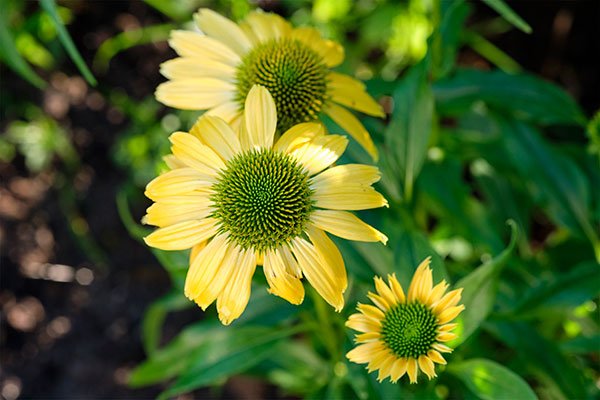 Featured Flower: Echinacea Info/Trivia
Featured Flower: Echinacea Info/Trivia
- - Echinacea is a flowering plants in the daisy family, which are commonly called coneflowers.
- - They have large, showy heads of composite flowers, blooming the entire summer.
- - Echinacea are members of the sunflower family
- - the flowering structure is a composite inflorescence, with usually rose-colored florets arranged in a prominent, somewhat cone-shaped head – "cone-shaped" because the petals of the outer ray florets tend to point downward (are reflexed) once the flower head opens, thus forming a cone.
- - Plants are generally long lived, with distinctive flowers. The common name "cone flower" comes from the characteristic center "cone" at the center of the flower head.
- - The generic name Echinacea is rooted in the Greek word ἐχῖνος (echinos), meaning hedgehog,[6] in reference to the spiky appearance and feel of the flower heads.
- - Echinacea is one of the most popular herbs worldwide.
- - Both the plant's upper parts and roots are used in tablets, tinctures, extracts and teas.
- - Echinacea is a native to North American and was discovered and used as a traditional herbal remedy for more than 400 years by the Great Plains Indian tribes.
https://en.wikipedia.org/wiki/Echinaceahttps://www.healthline.com/nutrition/echinaceahttps://draxe.com/nutrition/echinacea-benefits/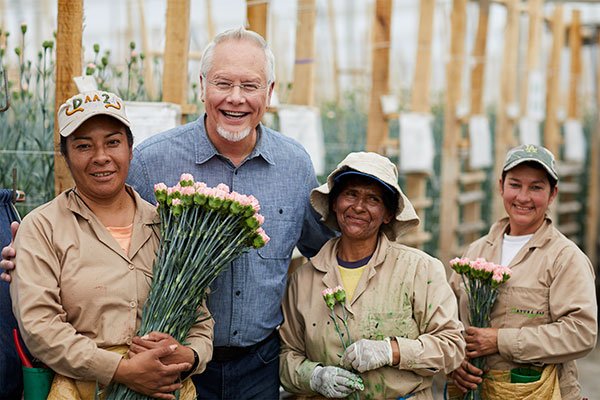 A Visit to Ayura - Colombia Carnation and Rose Growers! What else do flowers and coffee have in common? Well, one country grows substantial amounts of both - Colombia. Let’s learn more about why Colombia is geographically well-suited to grow flowers, on a visit to Ayura Eclipse Pride flower farm…”Learn more about Ayura- Pride- Eclipse Flowers- and the social programs they have for their employees- and their sustainable flowers- at this link:The People behind the Flowers – Filmed in Colombia, South AmericaMeet my friend- José Restrepo- from Ayura - and learn more about him, his horses and flower farm (Coming Soon)
A Visit to Ayura - Colombia Carnation and Rose Growers! What else do flowers and coffee have in common? Well, one country grows substantial amounts of both - Colombia. Let’s learn more about why Colombia is geographically well-suited to grow flowers, on a visit to Ayura Eclipse Pride flower farm…”Learn more about Ayura- Pride- Eclipse Flowers- and the social programs they have for their employees- and their sustainable flowers- at this link:The People behind the Flowers – Filmed in Colombia, South AmericaMeet my friend- José Restrepo- from Ayura - and learn more about him, his horses and flower farm (Coming Soon) 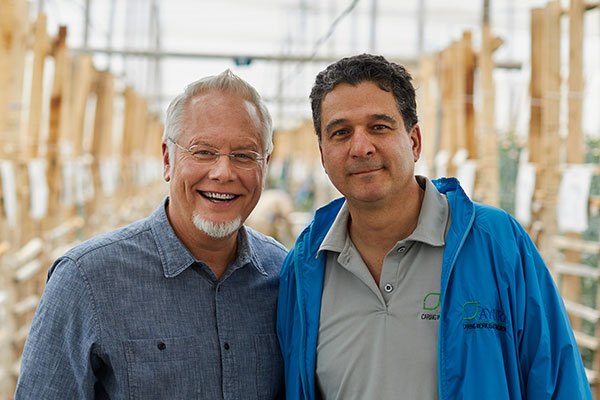 I hope you’ve enjoyed my inspiration for this episode. I love observing how flowers intersect all facets of our daily lives, and I also love to learn new things in the process. For Life In Bloom, I’m J Schwanke.
I hope you’ve enjoyed my inspiration for this episode. I love observing how flowers intersect all facets of our daily lives, and I also love to learn new things in the process. For Life In Bloom, I’m J Schwanke.

